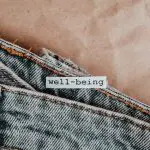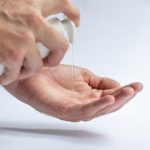You know how quick dry super glue can work wonders on hard surfaces, but can it work on fabrics too? The answer is yes, it can!
In this guide, you'll learn about the compatibility of quick dry super glue with different fabric types, the benefits of using it on fabrics, as well as any drawbacks and considerations to keep in mind.
Whether you're looking to mend a torn fabric, attach embellishments, or create unique fabric crafts, understanding how to effectively use quick dry super glue on fabrics can be a valuable skill.
So, let's dive in and discover the ins and outs of using this versatile adhesive on your fabric projects.
Key Takeaways
- Quick dry super glue bonds materials together through a chemical reaction.
- Quick dry super glue forms a strong bond with cotton, polyester, and nylon fabric.
- Quick dry super glue creates a strong and durable bond on fabrics, while remaining flexible when dry.
- Removing quick dry super glue from fabrics can be challenging and alternative fabric adhesives may be considered for better results.
Understanding Quick Dry Super Glue
When using quick dry super glue, it's important to understand how it bonds materials together. The chemical composition of this type of adhesive typically includes cyanoacrylate, which creates a strong bond when it comes into contact with moisture. Understanding the bonding process is crucial for achieving the best results.
Quick dry super glue works by creating a chemical reaction with the surface it's applied to, forming a durable and resilient bond.
In terms of application techniques, it's essential to apply a small amount of the glue to one surface and then press the two surfaces together firmly. This helps ensure maximum contact and a strong bond. Additionally, ensuring that the surfaces are clean and free of any debris or moisture will also contribute to a better bond.
As for the drying time, this type of super glue typically sets within seconds to a few minutes, depending on the specific product and the materials being bonded.
Understanding these key aspects of quick dry super glue will enable you to use it more effectively for your projects.
Compatibility With Different Fabric Types
Quick dry super glue works well on various fabric types, including cotton, polyester, and nylon, when used correctly. However, it's essential to consider the compatibility of super glue with specific fabrics to ensure successful bonding.
Here's a breakdown of how quick dry super glue interacts with different fabric types:
- Cotton: Quick dry super glue forms a strong bond with cotton fabric, making it suitable for quick repairs on cotton clothing and household items.
- Polyester: This type of fabric is compatible with quick dry super glue, allowing for durable and long-lasting repairs.
- Nylon: Quick dry super glue bonds effectively with nylon, making it a suitable option for fixing nylon garments and gear.
- Silk compatibility: While super glue can technically bond with silk, it's crucial to exercise caution due to the delicate nature of silk fabric. Test the glue on a small, inconspicuous area first to ensure it doesn't damage the fabric.
- Denim application: Super glue can be used to mend denim fabric, providing a quick and reliable solution for repairing denim clothing and accessories.
Benefits of Using Quick Dry Super Glue on Fabrics
You can experience improved strength and durability when using quick dry super glue on fabrics, providing long-lasting repairs for various clothing and household items. The advantages of using quick dry super glue on fabrics are numerous. This type of glue creates a strong bond that can withstand frequent washing and wearing. It also dries quickly, allowing for fast and efficient repairs. Additionally, quick dry super glue is flexible when dry, making it suitable for fabrics that require some give, such as spandex or knits.
Here are some key benefits of using quick dry super glue on fabrics:
| Advantages | Application Techniques |
|---|---|
| Strong and durable bond | Apply a small amount of glue to one surface, press the fabrics together firmly, and hold in place until the glue sets. |
| Quick drying time | Apply the glue sparingly and avoid saturating the fabric to ensure fast drying. |
| Flexibility when dry | Use in small, targeted areas to maintain the fabric's flexibility. |
| Washable and long-lasting repairs | Allow the glue to cure for at least 24 hours before washing the fabric. |
Using quick dry super glue on fabrics not only provides a reliable solution for repairing clothing and household items but also offers a quick and effective way to extend the lifespan of your favorite pieces.
Drawbacks and Considerations
Consider the potential drawbacks and important considerations when using quick dry super glue on fabrics.
While quick dry super glue can be effective for certain fabric repairs, there are some drawbacks and considerations to keep in mind:
- Potential damage: Quick dry super glue can cause discoloration or damage to certain types of fabrics. It's important to test the glue on a small, inconspicuous area of the fabric before applying it to the repair area.
- Lack of flexibility: Super glue can harden and become brittle, which may not be suitable for fabrics that require flexibility, such as clothing or upholstery.
- Difficulty in removal: Once quick dry super glue sets, it can be challenging to remove from fabrics without causing further damage.
- Alternative methods: Consider alternative fabric adhesives such as fabric glue or fusible web, which are specifically designed for use with fabrics and may provide better results without the risk of potential damage.
- Ventilation: When using quick dry super glue, ensure that you're working in a well-ventilated area to avoid inhaling fumes.
Tips for Applying Quick Dry Super Glue on Fabrics
When applying quick-dry super glue on fabrics, always ensure that the repair area is clean and free from any dirt or debris. Proper fabric preparation is essential for effective bonding. Start by gently cleaning the area with a mild detergent and allowing it to dry completely before applying the glue. Additionally, consider roughening smooth fabric surfaces with sandpaper to enhance adhesion.
When it comes to application techniques, use the smallest amount of glue necessary to cover the damaged area. Apply it sparingly to avoid saturating the fabric, which can lead to stiffness or discoloration. For delicate or lightweight fabrics, apply the glue to a small patch of fabric or a thin piece of mesh and then carefully press it onto the damaged area. This method helps prevent the glue from seeping through the fabric and causing unsightly stains.
Remember to work quickly and precisely when applying the super glue, as it dries fast. After applying the glue, firmly press the repaired area together and hold it in place for the recommended bonding time. Following these tips can help you achieve a successful fabric repair using quick-dry super glue.
Frequently Asked Questions
Can Quick Dry Super Glue Be Used to Repair Delicate Fabrics Like Silk or Lace?
Yes, quick dry super glue can be used to repair delicate fabrics like silk or lace. However, it's important to consider fabric safety, adhesive residue, and washing durability. Some fabrics may have restrictions, so always test in a small area first.
Is Quick Dry Super Glue Safe to Use on Fabrics That Will Be in Direct Contact With Skin, Such as Clothing or Accessories?
When using quick dry super glue on fabrics in direct contact with skin, like clothing or accessories, it's important to consider alternatives like fabric glue. Apply with caution and follow proper application techniques for best results.
Will Quick Dry Super Glue Leave a Visible Residue or Discoloration on Fabrics After Application?
When using quick dry super glue on fabrics, potential risks include leaving a visible residue or discoloration. To avoid this, apply a small amount of glue and test it on a hidden area first.
Can Quick Dry Super Glue Withstand Washing and Drying Cycles Without Losing Its Adhesive Properties on Fabrics?
Yes, Quick Dry Super Glue can withstand washing and drying cycles without losing its adhesive properties on fabrics. Its fabric durability and adhesive strength make it compatible for use on various types of fabrics.
Are There Any Specific Fabric Types or Blends That Quick Dry Super Glue Is Not Recommended For?
When using quick dry super glue on fabrics, consider fabric compatibility and potential risks. Some fabric types or blends may not bond well with the glue, so it's best to test on a small area first.
- Where to Buy Sherpa Suede Fabric - July 12, 2025
- How to Draw or Illustrate the Texture of Suede Fabric - July 12, 2025
- What Is Baseball Suede Leather Fabric? - July 12, 2025







